Chinese New Year
Chinese New Year: China's Grandest Festival & Longest Public Holiday

Chinese New Year, also known as the Spring Festival (Chūnjié), stands as the most significant cultural event in China, seamlessly blending ancient traditions with modern vibrancy. Spanning 15 days, it is a time for family reunions, symbolic rituals, and communal joy. For international travelers, it offers an unparalleled opportunity to immerse themselves in China’s rich heritage, from Spring Festival couplets (Chūnlián) to bustling temple fairs. Below, we explore every facet of this grand celebration, enriched with folk customs and regional diversity.
 Dates & Public Holidays: A Dynamic Calendar
Dates & Public Holidays: A Dynamic Calendar
▶ Date Variability & Astronomical Roots
The Spring Festival begins on the second new moon after the winter solstice, aligning with the Start of Spring (Lìchūn) solar term, which explains its alternate name, “Spring Festival.” The dates shift annually between January 21 and February 20.
▶ 2025 Key Dates
- Lunar New Year’s Eve: January 28, 2025
- Official Holiday: January 28 – February 4, 2025 (7 days)
- Lantern Festival: February 12, 2025 (closing the celebration)
▶ Public Holiday Schedule (2025–2029)
|
Year |
Date |
Holiday Period |
Zodiac Sign |
|
2025 |
Jan 29 (Wed) |
Jan 28 – Feb 4 |
Snake |
|
2026 |
Feb 17 (Tue) |
Feb 16 – Feb 23 |
Horse |
|
2027 |
Feb 6 (Sat) |
Feb 5 – Feb 12 |
Goat |
|
2028 |
Jan 26 (Wed) |
Jan 25 – Feb 1 |
Monkey |
|
2029 |
Feb 13 (Tue) |
Feb 12 – Feb 19 |
Rooster |
▶ 2025: Year of the Snake – Symbolism & Traits
The Snake (Shé) symbolizes wisdom, mystery, and transformation. Those born in Snake years (e.g., 2025) are said to be intuitive and strategic. The “benmingnian” (本命年), or zodiac year, is marked by wearing red for luck.
 Core Traditions & Celebrations: From Ancient Rituals to Modern Joy
Core Traditions & Celebrations: From Ancient Rituals to Modern Joy
▶ Family Reunion: The Heartbeat of the Festival
Spring Rush (Chūnyùn 春运)
The world’s largest migration sees 3 billion trips over 40 days. Families reunite for the Reunion Dinner (Niányèfàn), featuring regional specialties:
- Northern China: Dumplings (jiaozi) and braised pork.
- Southern China: Rice cakes (niangao) and poon choi (layered hotpot).
▶ Decorations: Colors, Symbols, and Auspicious Wishes
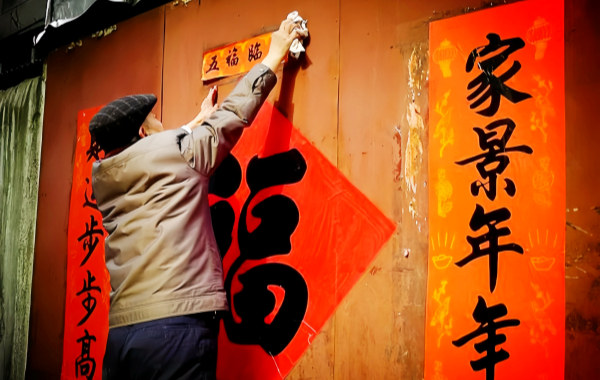
█ Spring Festival Couplets (Chūnlián)
- History: Originated as “taofu” (peach wood charms) during the Han Dynasty to ward off evil.
- Modern Use: Red paper with black calligraphy, pasted on doorframes. Common phrases:
- 上联 (Top): “天增岁月人增寿” (Heaven gains years, man gains longevity)
- 下联 (Bottom): “春满乾坤福满门” (Spring fills the universe, fortune fills the home)
- 横批 (Horizontal): “吉祥如意” (Good luck and smooth sailing)
█ Regional Variations
In Fujian, couplets include local dialect phrases; in Hong Kong, they may feature English translations.
█ “Fu” Characters & Paper-Cutting:
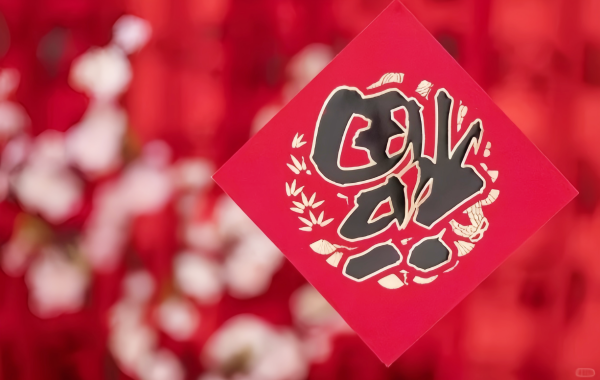
- Upside-Down “Fu”: Symbolizes “blessings arrive” (fú dào).
- Window Paper-Cuts: Intricate designs like fish (abundance), peonies (prosperity), and the zodiac animal.
█ Red Lanterns:
- Symbolism: Represents reunion and vitality.
- Materials: Silk, paper, or glass, often with tassels.
▶ Red Envelopes (Hongbao): Digital & Traditional
- Physical Hongbao: Given to children, elders, and unmarried adults as a symbol of good luck and blessings. The amount varies greatly depending on the region and relationship:
- North China: In some areas, the amounts can be quite large, sometimes reaching thousands or even tens of thousands of RMB, especially among close relatives. However, generally, it is common to give 100 - 500 RMB.
- Southern China: In Guangdong, it is more about the gesture of giving rather than the amount. Usually, the amounts range from a few yuan to several tens of yuan, though in some cases, for very close family members, it can go up to 2,000 RMB.
- Pressuring Money (Yāsuìqián) Custom: The tradition of giving red envelopes has a long - standing history. It is believed to drive away evil spirits and bring good luck to the recipients. During the Spring Festival, elders give red envelopes to the younger generation, hoping they will grow up healthily and have a prosperous future. In some families, married couples also give red envelopes to unmarried siblings or cousins.
- Digital Revolution: WeChat’s “lucky money” feature lets users send virtual hongbao in group chats, sparking competitive “grabbing” games.
▶ CCTV Spring Festival Gala: A Cultural Phenomenon
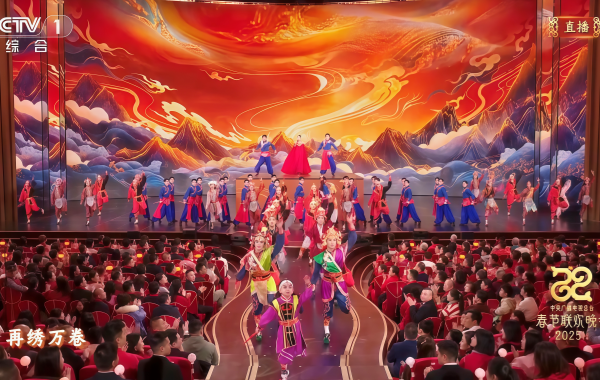
- Broadcast Since 1983: Over 1 billion viewers tune in annually.
- Program Highlights:
- Language Sketches: Satirical comedies reflecting social issues.
- Dance & Music: Fusion of traditional and modern performances.
- Magical Acts: Illusionists and acrobats.
- Critiques: Despite declining ratings among younger audiences, it remains a nostalgic staple for older generations.
▶ Fireworks & Firecrackers: Lighting Up the Sky
- Legend of “Nian”: The monster “Nian” feared loud noises and red, leading to firecracker traditions.
- Modern Restrictions: Major cities like Beijing and Shanghai ban fireworks in urban areas, but rural regions still host dazzling displays.
▶ Temple Fairs & Folk Performances
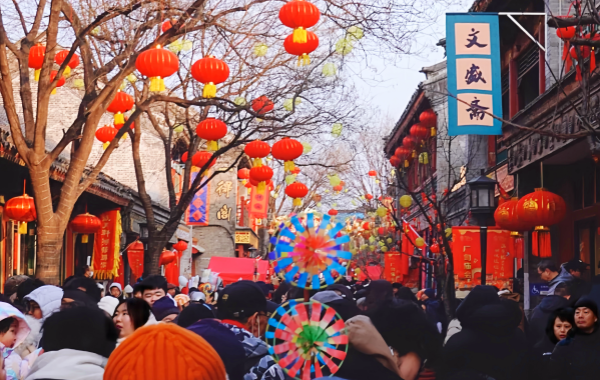
- Beijing's Ditan Temple Fair: Features ancient rituals, folk dances, and street food.
- Xi’an’s City Wall Lantern Festival: Giant lanterns depicting historical figures.
- Guangzhou's Flower Market (Huājiē): Millions buy peonies, orchids, and kumquat trees for good luck.
▶ Folk Arts & Crafts
- New Year Paintings (Niánhuà):
- Styles: Woodblock prints from Yangliuqing (Tianjin) or Taohuawu (Suzhou).
- Themes: Door gods (Ménshén) to guard homes, babies symbolizing fertility.
- Kite Making: In Weifang, Shandong, families craft kites shaped like dragons or phoenixes for New Year flights.
- Paper-Cutting for New Year: In addition to window paper - cuts, in some areas, people also make large - scale paper - cut artworks to decorate their homes or public places. These paper - cuts often tell stories from traditional Chinese myths or historical events.
▶ Dragon and Lion Dances
- Northern Dragon Dances: Long dragons (up to 100 meters) maneuvered by dozens of performers, symbolizing rain and harvest.
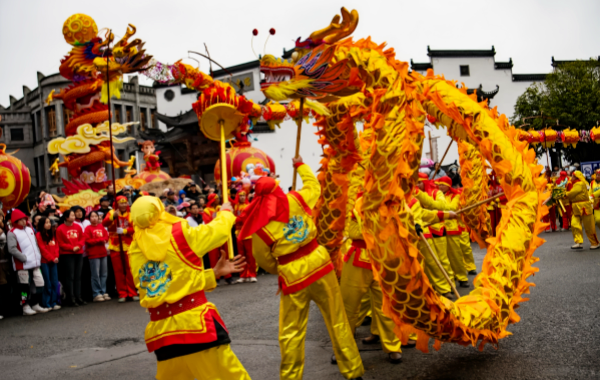
Southern Lion Dances: Colorful lions (red/gold for luck) performing acrobatics, often paired with drumming.
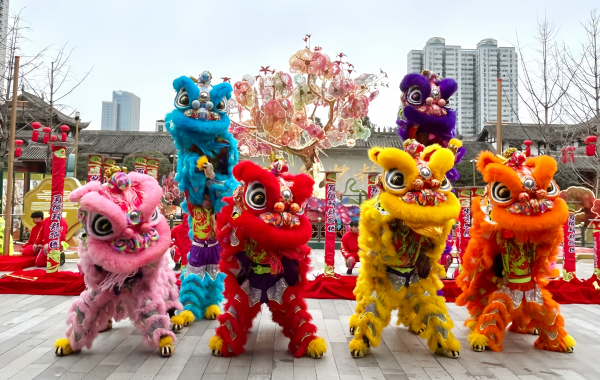
▶ Worshiping Ancestors
During the Spring Festival, many families set up ancestral altars in their homes. They offer food, fruits, and incense to their ancestors as a way to show respect and gratitude. In some rural areas, there are also large - scale ancestral worship ceremonies held in ancestral halls, where the whole village or clan participates.
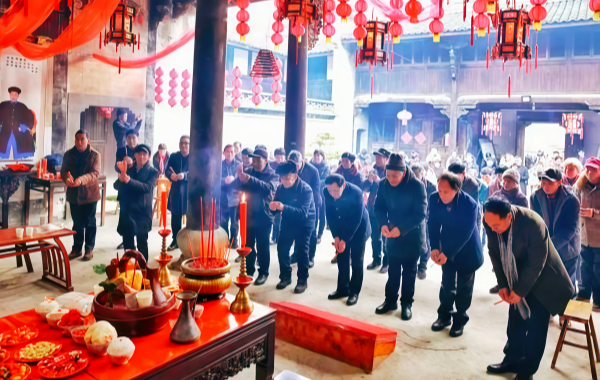
▶ Cleaning the House
A few days before the Spring Festival, families engage in a thorough cleaning of their homes, known as “sweeping away the dust.” This tradition symbolizes getting rid of the old and welcoming the new, removing bad luck and making way for good fortune in the coming year.
 Culinary Delights: A Feast for the Senses
Culinary Delights: A Feast for the Senses
▶ Must-Try Dishes for International Travelers
Jiaozi (Dumplings):
- Northern China: Pork and cabbage filling, boiled or pan-fried.
- Southern China: Shrimp and chive dumplings in bamboo steamers.
Niangao (Rice Cakes):
- Shanghai Style: Sweet, sticky, and served with red bean paste.
- Zhejiang Style: Savory versions with cured meat.
Tangyuan:
- Guangdong: Sweet black sesame or peanut filling.
- Taiwan: Mini tangyuan in ginger soup.
Hotpot:
▶ Symbolic Foods & Their Meanings
- Spring Rolls: Golden and crispy, symbolizing wealth.
- Sticky Rice Cake (Niangao): “Nian nian gao sheng” (rising higher each year).
- Longevity Noodles: Uncut noodles served on birthdays and New Year.
 Traveling During Spring Festival: Tips & Destinations
Traveling During Spring Festival: Tips & Destinations
▶ Essential Travel Advice
- Book Early: Flights and trains sell out 3–6 months in advance.
- Avoid Peak Days: Travel before Jan 26 or after Feb 5, 2025.
- Pack Layered Clothing:
- Southern China: Light jackets (10–25°C).
- Northern China: Heavy down jackets (-10°C or lower).
- Cash & Cards: Don't worry. Even small vendors accept digital payments (such as Alipay or WeChat pay). Of course, they also accept RMB cash..
▶ Top 5 Destinations for International Visitors
- Temple of Heaven: Watch elderly locals perform tai chi.
- Great Wall: Snow-covered sections like Mutianyu.
- Terracotta Warriors: Fewer crowds during holidays.
- Tang Dynasty Dance Show: “Dream Back to the Tang Dynasty.”
- Ice & Snow Festival: Giant ice sculptures lit with LEDs.
- Siberian Tiger Park: Winter safari experience.
- Ancient City: Ming Dynasty architecture and lantern - lit streets.
- Paper-Cutting Workshops: Learn traditional crafts.
- Canton Tower: Fireworks display over the Pearl River.
- Dim Sum Feasts: Try turnip cake (lo bak go) and shrimp dumplings.
▶ Hidden Gems Off the Beaten Path
- Zhujiajiao (Shanghai Suburb): Water town with lantern - lit canals.
- Fenghuang Ancient Town (Hunan): Miao ethnic minority celebrations.
- Lijiang (Yunnan): Naxi minority rituals and bonfire dances.
 History & Cultural Evolution
History & Cultural Evolution
▶ Ancient Origins
- Shang Dynasty (1600–1046 BCE): Rituals honoring ancestors and deities.
- Zhou Dynasty (1046–256 BCE): The term “Nian” (year) emerged, with sacrifices to gods.
- Han Dynasty (206 BCE–220 CE): New Year became a family - centric holiday.
▶ The Legend of “Nian”
A beast named “Nian” terrorized villages until a wise elder discovered it feared red, fire, and loud noises. Villagers adopted red decorations and firecrackers, a tradition that endures today.
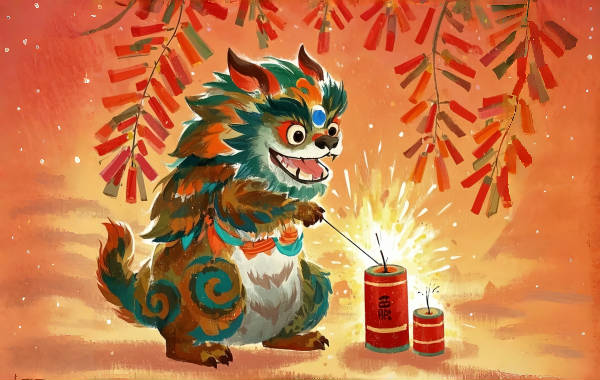
▶ The Origin of "Nian" - The Ferocious Beast
- Appearance and Habit: "Nian" was a terrifying beast with a huge body, sharp teeth, and a deafening roar. It lived deep in the mountains and would come down to terrorize villages once a year, usually during the darkest and coldest time of winter.
- Destruction It Caused: When Nian arrived, it would devour livestock, destroy crops, and even attack villagers, leaving a trail of fear and devastation in its wake. The villagers lived in constant dread of its annual visit.
▶ The Traditional Way of Celebrating the Lunar New Year to Scare Away "Nian"
- The Elder's Discovery: A wise elder in one of the villages noticed that Nian seemed to be afraid of certain things. He observed that Nian shied away from red, was startled by fire, and fled from loud noises.
- Adopted Traditions: Based on these observations, the villagers decided to paste red couplets on their doors, light fires in front of their houses, and set off firecrackers when Nian was expected to arrive. These measures proved effective, and Nian was scared away, bringing peace to the villages. Since then, these traditions have become an integral part of celebrating the Chinese New Year.
▶ The Evolution of New Year Celebrations
- Modern Decorations: While red decorations and firecrackers remain popular, modern New Year celebrations have also incorporated new elements. People now use more diverse and creative red ornaments, such as red lanterns with LED lights and red paper-cuttings with modern designs.
- Travel During the New Year: One significant change is the trend of traveling during the New Year holiday. Many people take advantage of the long vacation to visit relatives in other cities or go on tourist trips. Popular destinations include scenic spots, historical sites, and bustling metropolises, adding a new dimension to the traditional New Year celebrations.
▶ Modern Adaptations
- Digital Trends: Virtual hongbao, live - streamed temple fairs.
- Environmental Concerns: Eco - friendly fireworks and LED lanterns.
- Global Influence: Chinese New Year parades in London, New York, and Sydney.
 The Zodiac: Beyond the Snake
The Zodiac: Beyond the Snake
The 12 - year zodiac cycle reflects Chinese philosophy’s balance of yin and yang. Each animal embodies unique traits:
- Rat: Quick - witted, resourceful.
- Ox: Diligent, reliable.
- Tiger: Brave, competitive.
- Rabbit: Gentle, sensitive.
- Dragon: Powerful, charismatic.
- Snake: Wise, enigmatic.
- Horse: Energetic, independent.
- Goat: Creative, compassionate.
- Monkey: Playful, inventive.
- Rooster: Confident, hardworking.
- Dog: Loyal, honest.
- Pig: Generous, optimistic.
In 2025, the Snake year encourages introspection and strategic planning—a theme reflected in both personal resolutions and national aspirations.
 Embrace the Spirit of Renewal
Embrace the Spirit of Renewal
The Spring Festival is a living testament to China’s ability to honor tradition while embracing change. For travelers, it’s an opportunity to witness ancient rituals, savor culinary masterpieces, and connect with a culture that values family, resilience, and hope. Whether you’re marveling at Harbin’s ice sculptures or sharing dumplings with a Beijing family, the Year of the Snake promises unforgettable memories. Plan wisely, wear red for luck, and welcome the new year with open arms!
What Our Clients Say?
Based on 10,000+ traveler reviews












